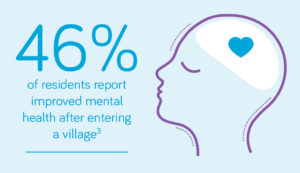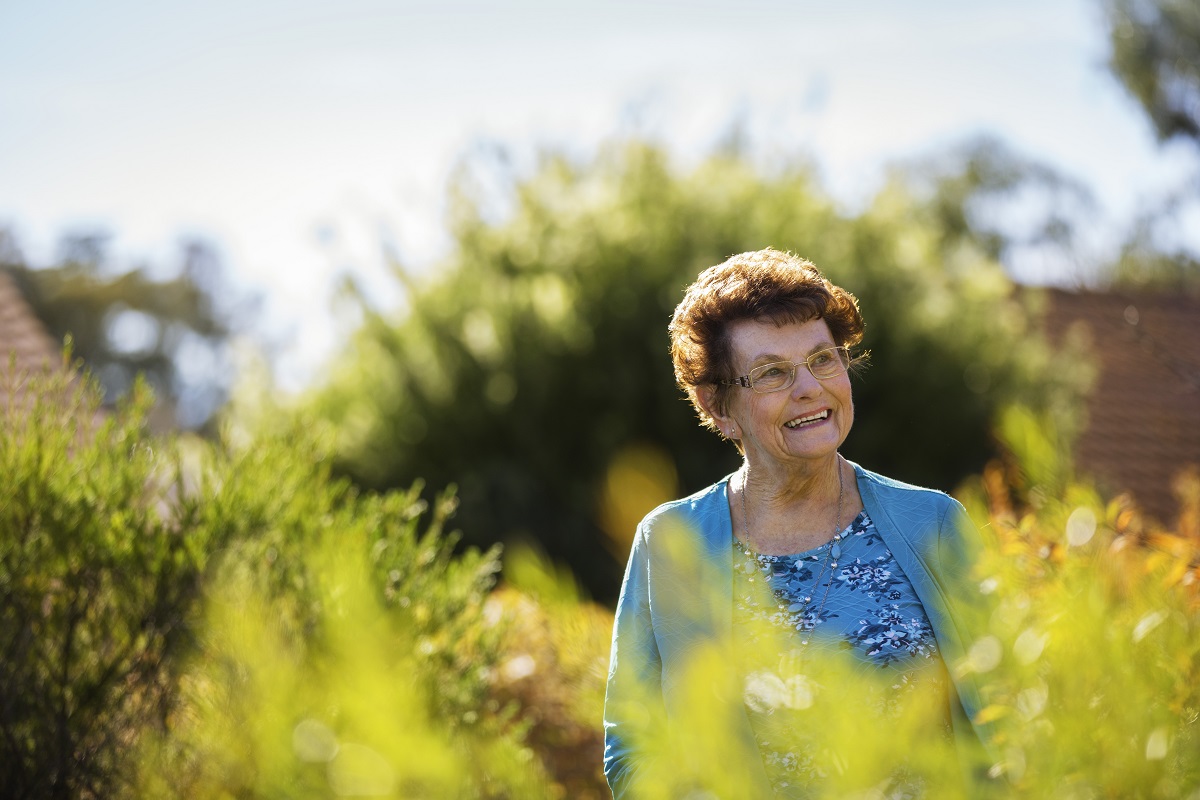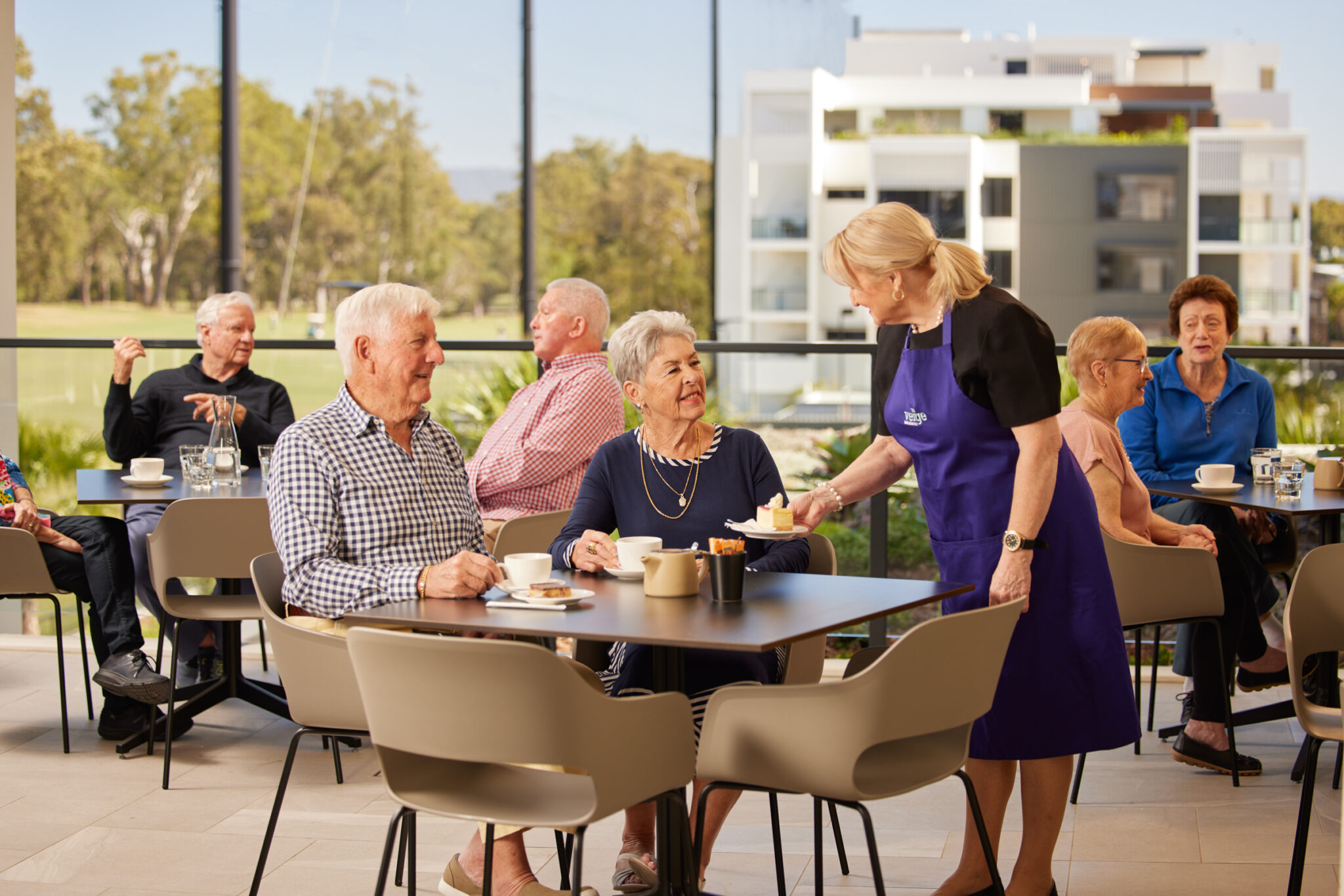Here are just seven of the ways retirement village living is good for your health and wellbeing.
1. Reduce isolation and improve mental wellbeing
One in five older Australians [1] is estimated to suffer from social isolation, which can negatively impact one’s mental health [2]and even lead to depression. The recent COVID-19 pandemic and lockdowns created even further social isolation for older Australians.
Life in a retirement village is specifically designed to counter social isolation, and instead foster a sense of belonging and community. Residents have many opportunities to connect with each other through a range of social activities and events, which has a positive effect on health and wellbeing. Indeed, research [3] shows that 46% report improved mental health after moving into a retirement village.
2. Boost longevity
Living better and healthier is great, but what about living longer? A Swedish study [5] has shown that being socially active can add up to five years to the life expectancy for women, and six years for men.
Researchers studied 1800 people over 18 years, and found that several factors impacted longevity, including having healthy lifestyle behaviours, a better social network, and participating in more leisure activities.
The research is in – a retirement village is the perfect place to boost your longevity through social connections and involvement in sporting and social activities and interests.
3. Reduce the risk of disability
Research conducted by Rush University Medical Center [6] has shown that people who are more socially active are less likely to become disabled. In other words, they’re less likely to need help with daily activities or mobility.
The good news is that researchers looked at a broad range of social activities, so whatever your interests, your social activities will have a positive impact. Researchers measured social activities like going to restaurants, playing bingo, volunteering, going on day or overnight trips, and visiting relatives and friends. With a busy social calendar on offer in all of our villages, you’ll be spoilt for choice in how you wish to stay active.
4. Fewer and shorter hospital stays
The Property Council of Australia [7] reports that retirement villages provide services that enable residents to have shorter hospital stays – and fewer of them. In fact, retirement village residents leave hospital a full two days earlier than non-residents. That’s because retirement village residents can be discharged into a safe environment that’s equipped with hand railings, ramps, an emergency call system and on-site support staff.
What’s more, the social connectedness that’s inherent in a retirement village helps counteract problems of social isolation and depression when you’re home after an operation. When you consider that falls and depression are two of the most common health conditions for older people [8], it’s no wonder that a safe, secure site and supported community can help keep retirement village residents out of hospital.
5. Visit the GP less often
In the Property Council of Australia report, it’s estimated that over 65s visit their local GP about 6-7 times a year. In contrast, residents in retirement villages make 1-3 fewer visits each year. They attribute this to the fact that many retirement villages have staff on-site who can assist with minor health concerns.
At RetireAustralia villages, residents can choose from a range of care and support services to meet their individual needs, whether that means ongoing, daily support in a serviced apartment or flexible services delivered right into their home through our Home Care team or other provider.
6. Lower the risk of dementia
Research shows that engaging in meaningful activities can reduce the risk of stress-related illnesses and dementia [9]. Specifically, activities with purpose – like music, drawing, meditation, reading, and arts and crafts – are particularly helpful in boosting health and wellbeing.
Our villages offer ample opportunities to take part in social and leisure activities, from MahJong to arts and crafts, dancing and painting classes. Many of our villages also have a library and a workshop on-site, so you’ll always have meaningful activities on hand if you wish to join in. And, if we don’t have what you’re looking for? Our Village Managers are always open to new ideas and would love to hear what you’re passionate about pursuing.
7. Delay the move to aged care
Would you like to hold off on moving into residential aged care? If the answer is yes, then living in a retirement village could be a good start.
Research cited in the Property Council of Australia report [10] found that residents of retirement villages enter aged care later than those moving from the family home. This isn’t a matter of weeks or months, but years – an average of five years to be exact. This also means you get to enjoy the village facilities and lifestyle benefits of retirement living for longer.
It seems the course is clear – life in a retirement village is likely to boost your health and wellbeing, but also your sense of fulfilment. And a life well lived is worth aspiring to!










